Space farming
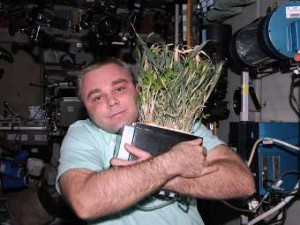 It took mankind all the knowledge gathered by scientists over hundreds of years to launch space flights. And then a person faced a new problem - for the colonization of other planets and long-distance flights, it is necessary to develop a closed ecosystem, including - to provide cosmonauts with food, water and oxygen. Delivering food to Mars, which is 200 million kilometers from Earth, is expensive and difficult; it will be more logical to find ways to produce products that are easy to implement in flight and on the Red Planet.
It took mankind all the knowledge gathered by scientists over hundreds of years to launch space flights. And then a person faced a new problem - for the colonization of other planets and long-distance flights, it is necessary to develop a closed ecosystem, including - to provide cosmonauts with food, water and oxygen. Delivering food to Mars, which is 200 million kilometers from Earth, is expensive and difficult; it will be more logical to find ways to produce products that are easy to implement in flight and on the Red Planet. How does microgravity affect seeds? What kind of vegetables will be harmless if they are grown in the soil of Mars rich in heavy metals? How to equip the plantation on board the spacecraft? Scientists and astronauts for over fifty years looking for answers to these questions.
In the illustration - Russian cosmonaut Maxim Surayev embraces the plants in the Lada installation aboard the International Space Station, 2014.
Konstantin Tsiolkovsky wrote in “Star Goals”: “Imagine a long conical surface or a funnel, the base or wide opening of which is covered with a transparent spherical surface. It is directly facing the Sun, and the funnel rotates around its long axis (height). On the opaque inner walls of the cone there is a layer of wet soil with plants planted in it. ” So he suggested artificially creating gravity for plants. Plants should be chosen fertile, small, without thick stems and not working in the sun parts. So the colonizers can be partially provided with biologically active substances and microelements and regenerate oxygen and water.
In 1962, the chief designer of the OKB-1, Sergey Korolev, set the task: “We should start the development of the Greenhouse (OR) in Tsiolkovsky,” with gradually increasing links or blocks, and we should start working on space harvests. ”
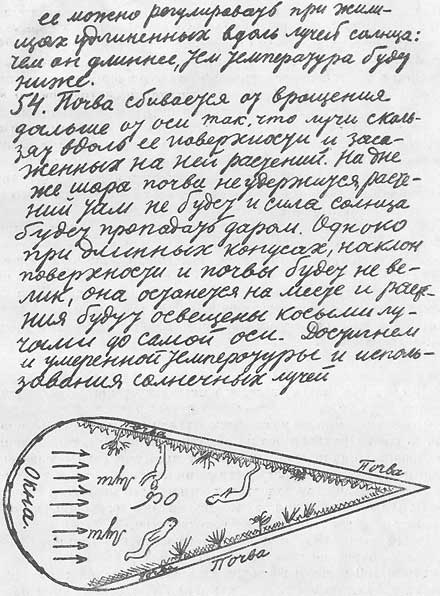
The manuscript of K.E. Tsiolkovsky "Space Travel Album", 1933. The source of the
USSR put into orbit the first artificial satellite of the Earth on October 4, 1957, twenty-two years after the death of Tsiolkovsky. Already in November of the same year, the mongrel Laika was sent to space, the first of the dogs that were supposed to open the way to space for people. Laika died from overheating in just five hours, although the flight was calculated for a week - there would be enough oxygen and food for this time.
Flying Squirrels and Arrowsin August 1960, he was more successful for both dogs and accompanying animals — forty mice and two rats. At the same time, the "Noah's Ark", Soviet scientists sent into space the seeds of corn, wheat, peas and onions. The entire team descended to Earth in a container designed for future human flights. But this was not enough - man had to start farming in space.
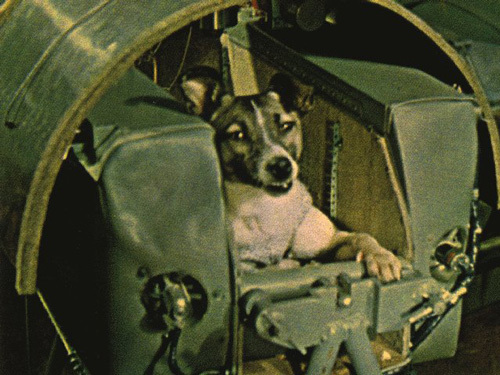
Dog Laika, the first dog in Earth orbit
In the book "Space - Earth" a pilot-cosmonaut, a member of the expedition "Soyuz-3" George Beregovoi wrotethat it is human nature to feel involved in the earthly nature, wherever it is: “But when you find yourself outside the home planet, this is perceived especially acutely. Pay attention to how astronauts tell with what excitement and warmth how the Earth looks from the height of orbit. Well, if together with them travels in a lifeless emptiness of space a piece of the living world, then care about the “countrymen” becomes downright delicate. Even when these "countrymen" - green stalks of ordinary peas. It was his, by the way, that A. Gubarev and G. Grechko grew up on the “Salute-4”, and then the members of the next expedition, P. Klimuk and V. Sevastyanov, again planted ”.
At the Salyut-4 orbital station, launched in 1974, was the Oasis installation for cultivating plants in weightlessness. Georgy Grechko wrote in the book "Astronaut No. 34" that working with the system was one of the most interesting experiments in his flight. The installation was hydroponic, there was no land, the peas were supposed to grow in the impregnated gauze. Shortly after starting work with the Oasis, the astronaut noticed that water did not flow into one cuvette, and flow too heavily into another, causing the pea to rot. Huge drops of water broke from the installation, followed by Grechko chasing the station with napkins. He cut off the hose and began to water the peas by hand while he was busy with the device for several hours.
The astronaut admits that he almost ruined the experiment because of his hatred of biology at school. He considered that the sprouts are confused in the fabric, growing incorrectly, and freed them from gauze, but this did not help. It turned out that he confused the roots with stems.
The experiment was completed successfully. For the first time in space, plants have gone through a cycle from seed to adult pea stem. But out of 36 grains only three rose and grew.
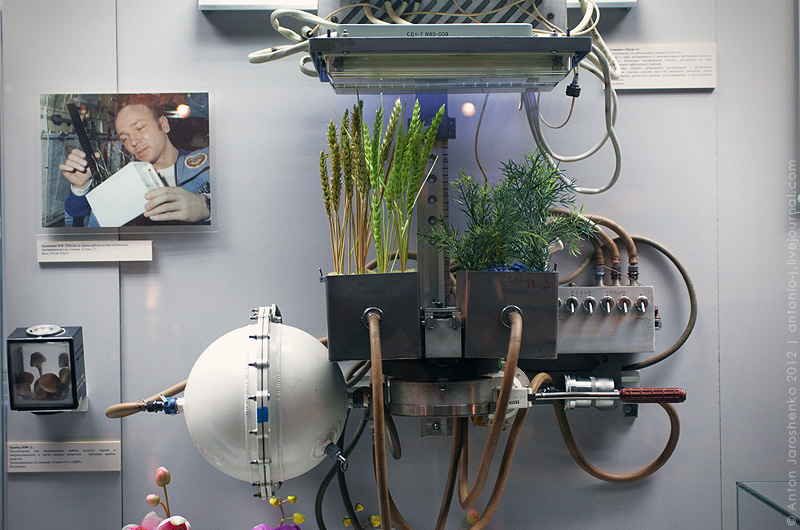
"Oasis-1" in the Memorial Museum of Cosmonautics. Source
Scientists have suggested that the problem arose because of a genetically inherent orientation - the seedling must reach for the light, and the root - in the opposite direction. They perfected the Oasis, and the next expedition took new seeds into orbit.
The bow has grown. Vitaly Sevastyanov reported to Earth that the arrows had reached ten to fifteen centimeters. “What arrows, what bow? We understand, this is a joke, we gave you peas, not bulbs, ”they said from the Earth. The flight engineer replied that astronauts grabbed two onions from the house to plant them in excess of the plan, and reassured the scientists - almost all the peas had come up.
But the plants refused to bloom. At this stage they died. The same fate awaited the tulips, which were in bloom at the “Buttercup” at the North Pole, but not in space.
But the onion could be eaten, which was successfully done in 1978 by astronauts V. Kovalenok and A. Ivanchenkov: “That's a good job. Maybe now we will be allowed to eat as a reward and an onion. ”
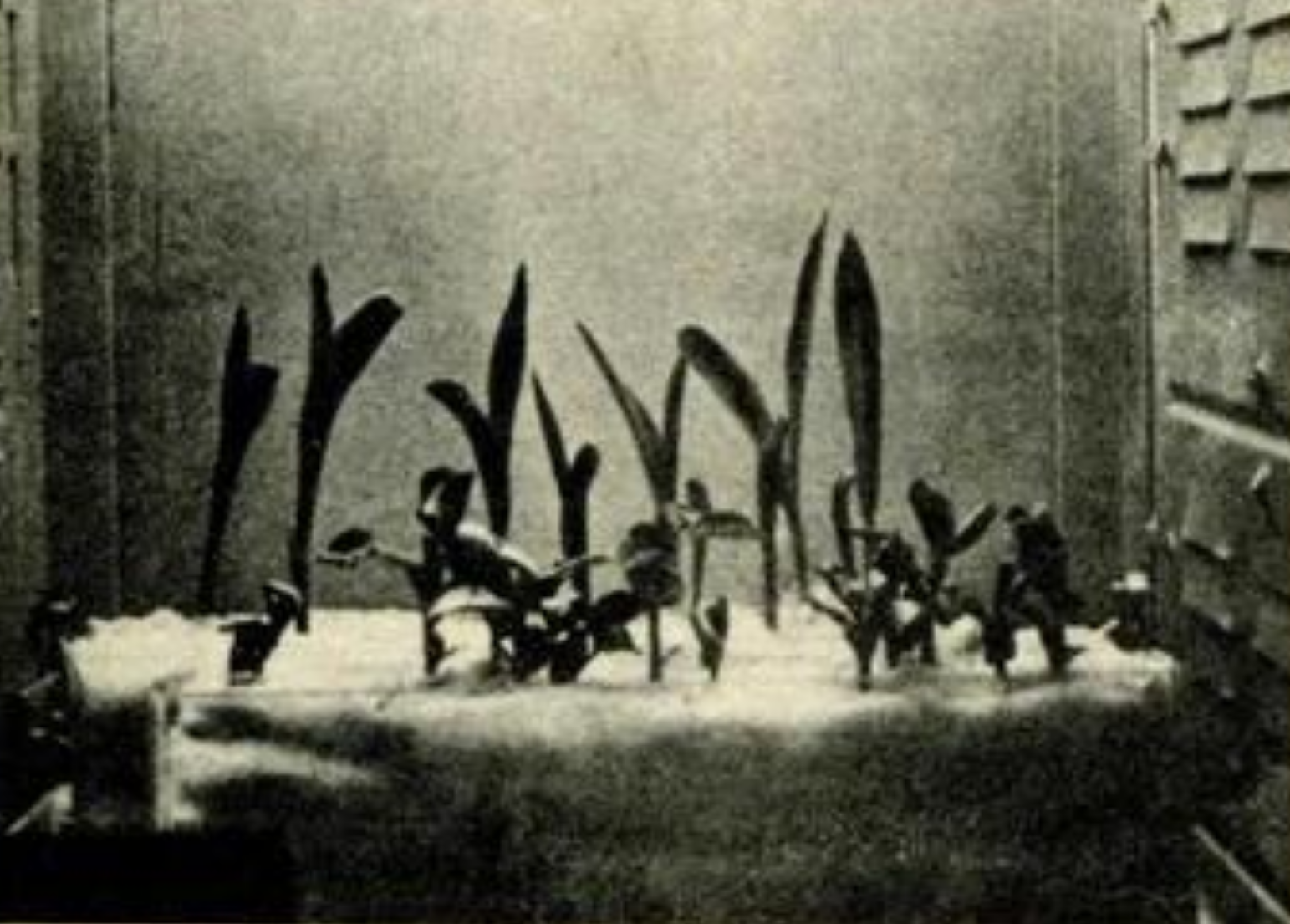
Engineering - Youth, 1983-04, page 6. Peas in the Oasis installation
In April 1980, the astronauts V. Ryumin and L. Popov received the installation Malachite with blooming orchids. Orchids are mounted in the bark of trees and in hollows, and scientists have decided that they may be less susceptible to geotropism - the ability of plant organs to settle down and grow in a certain direction relative to the center of the globe. The flowers fell a few days later, but at the same time new leaves and aerial roots appeared on the orchids. A little later, the Soviet-Vietnamese crew from V. Gorbatko and Fam Tuay brought with them a grown Arabidopsis.
The plants did not want to bloom. The seeds sprouted, but, for example, the orchid did not bloom in space. Scientists needed to help plants cope with weightlessness. This was done, among other things, by using the root zone electrostimulation: the scientists believed that the electromagnetic field of the Earth could affect growth. Another method suggested by Tsiolkovsky’s plan for creating artificial gravity — plants were grown in a centrifuge. The centrifuge helped - the sprouts were oriented along the vector of centrifugal force. Finally, the astronauts have achieved their. Arabidopsis blossomed in the Light Block.
On the left in the image below - the greenhouse "Fiton" aboard the "Salyut-7". For the first time in this orbital greenhouse, Rezuhovidka Tal (Arabidopsis) went through a full cycle of development and gave seeds. In the middle - “Light unit”, in which on board the “Salyut-6” Arabidopsis blossomed for the first time. On the right is the onboard Oazis-1A greenhouse at the Salyut-7 station: it was equipped with a system of dosed semi-automatic irrigation, aeration and electrical stimulation of the roots and could move the vegetation vessels with plants relative to the light source.
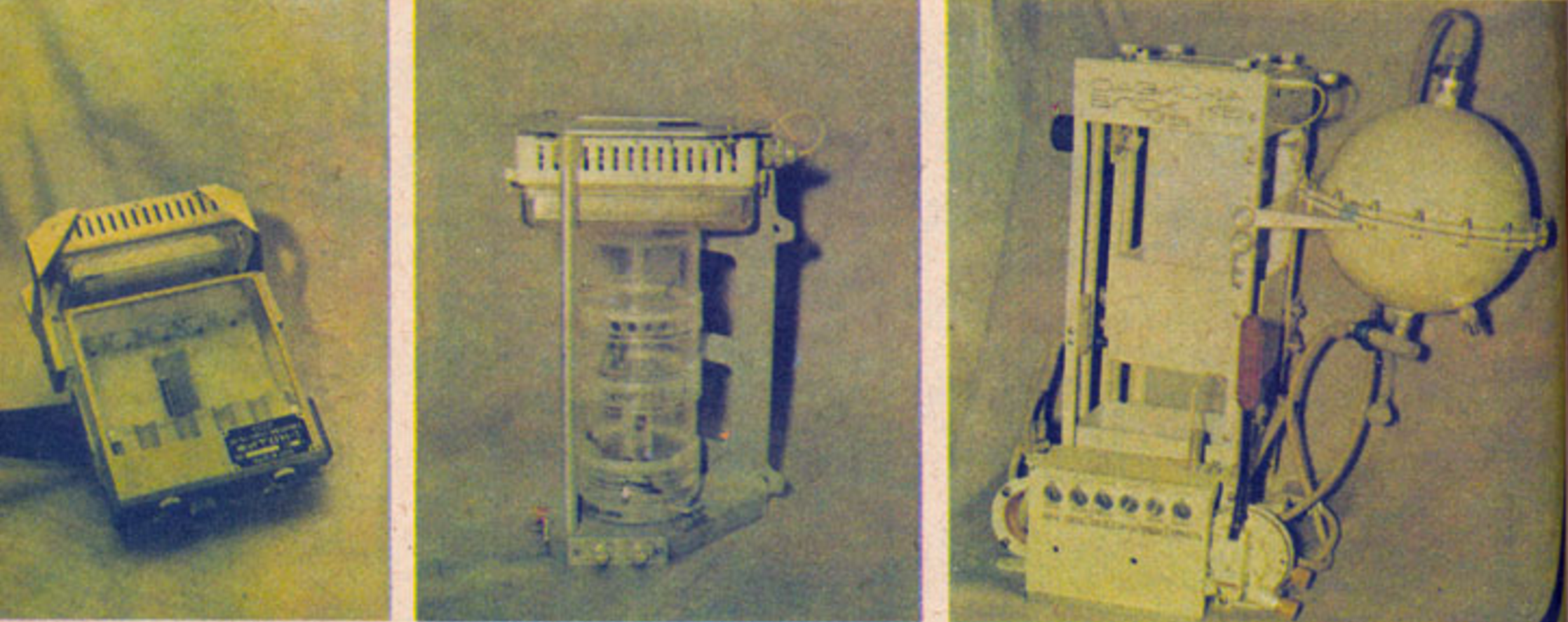
"Fiton", "Light blocks" and "Oasis-1A" The

installation "Trapezium" for the study of plant growth and development. Source

Sets with seeds
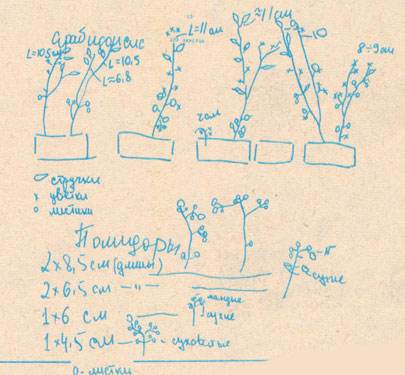
On-board magazine station "Salyut-7", sketches of Svetlana Savitskaya
At the Mir station, the world's first automatic greenhouse, Svet, was installed. In the 1990s – 2000s, the Russian cosmonauts conducted six experiments in this greenhouse. They raised salads, radishes and wheat. In 1996-1997, the Institute of Biomedical Problems of the Russian Academy of Sciences planned to grow the seeds of plants obtained in space - that is, to work with two generations of plants. For the experiment, we chose a hybrid of wild cabbage about twenty centimeters high. The plant had one minus - the astronauts had to engage in pollination.
The result was interesting - the seeds of the second generation in space were received, and they even came up. But the plants grew to six centimeters instead of twenty-five. Margarita Levinsky, a researcher at the Institute for Biomedical Problems of the Russian Academy of Sciences, tellsThat jewelry work on pollination of plants was performed by the American astronaut Michael Fossum.
Video Roscosmos about growing plants in space. At 4:38, the plants at the Mir station.
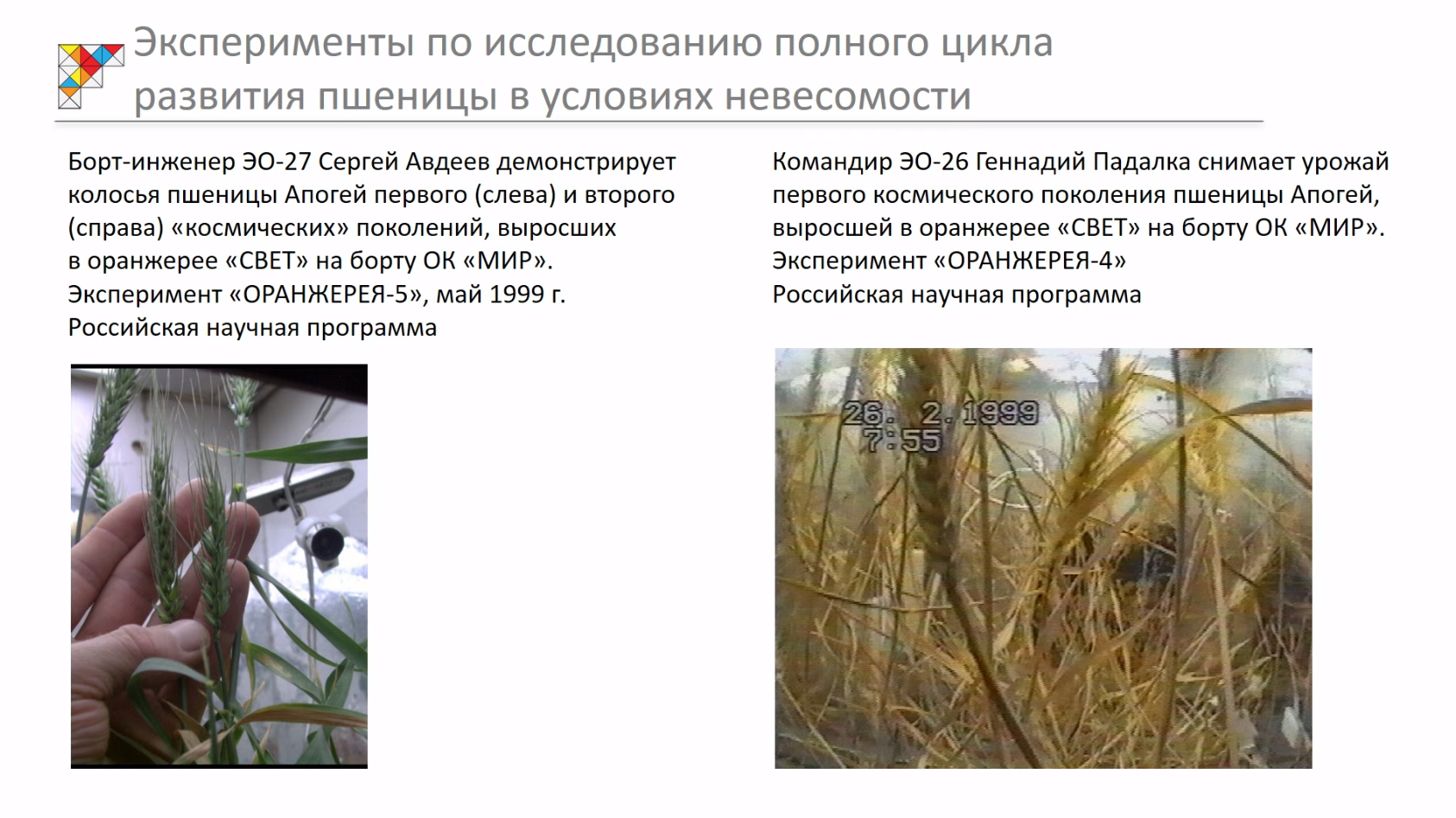

In April 2014, the spacecraft Dragon SpaceX delivered a veggie plant to the International Space Station, and in March, astronauts began testing an orbital plantation. The unit controls light and nutrient intake. In August 2015, fresh greens grown under microgravity were included in the astronaut menu .

Grown on the International Space Station lettuce

So a plantation on the space station may look like in the future
In the Russian segment of the International Space Station, the Lada greenhouse operates for the Plants-2 experiment . At the end of 2016 or the beginning of 2017, the Lada-2 version will appear on board. The Institute of Biomedical Problems of the Russian Academy of Sciences is working on these projects.
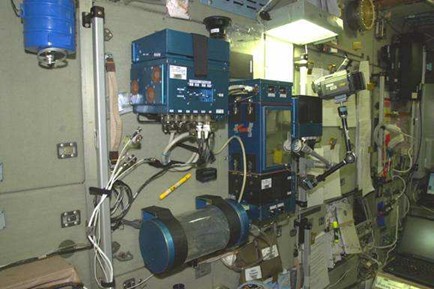

Space plant is not limited to experiments in weightlessness. Man for the colonization of other planets will have to develop agriculture on the ground, which is different from the earth, and in the atmosphere, which has a different composition. In 2014, biologist Michael Mautner raisedAsparagus with potatoes on meteoric soil. To get suitable for growing soil, the meteorite was ground into powder. Experiencedly, he was able to prove that bacteria, microscopic fungi and plants can grow on extraterrestrial soil. The material of most asteroids contains phosphates, nitrates and sometimes water.
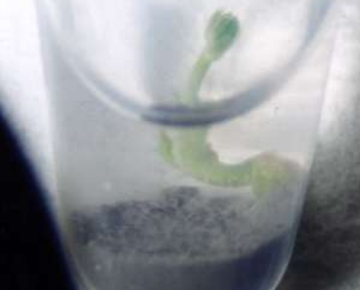
Asparagus grown on meteoric soil
In the case of Mars, where there is a lot of sand and dust, grinding of the rock is not needed. But there will be another problem - the composition of the soil. There are heavy metals in the ground of Mars, the increased amount of which in plants is dangerous for humans. Scientists from Holland imitated Martian soil and since 2013 they have grown ten harvests of several plant species on it.
As a result of the experiment, scientists found that the content of heavy metals in peas grown on simulated Martian soil, radish, rye and tomatoes is not dangerous for humans. Potatoes and other cultures, scientists continue to explore.

Researcher Wager Vamelink inspects plants grown on simulated Martian soil. Photo: Joep Frissel / AFP / Getty Images

The maintenance of metals in the crop collected on Earth and on simulations of the soil of the Moon and Mars.
One of the important tasks is to create a closed cycle of life support. Plants receive carbon dioxide and crew waste, give oxygen in return and produce food. Scientists checkedthe possibility of using in food single-cell algae of chlorella, containing 45% protein and 20% for each of fats and carbohydrates. But in theory, this nutritious food is not absorbed by man due to the dense cell wall. There are ways to solve this problem. Cell walls can be cleaved by technological methods using heat treatment, fine grinding, or other methods. You can take with you enzymes designed specifically for chlorella that astronauts will take with food. Scientists can and bring GMO-chlorella, the wall of which human enzymes can split. Chlorella for food in space is not currently engaged, but is used in closed ecosystems to produce oxygen.
An experiment with chlorella was performed aboard the Salyut-6 orbital station. In the 1970s, it was still believed that being in microgravity did not have a negative effect on the human body — too little information was available. They also tried to study the effect on living organisms with the help of chlorella, whose life cycle lasts only four hours. It was convenient to compare it with chlorella grown on Earth.
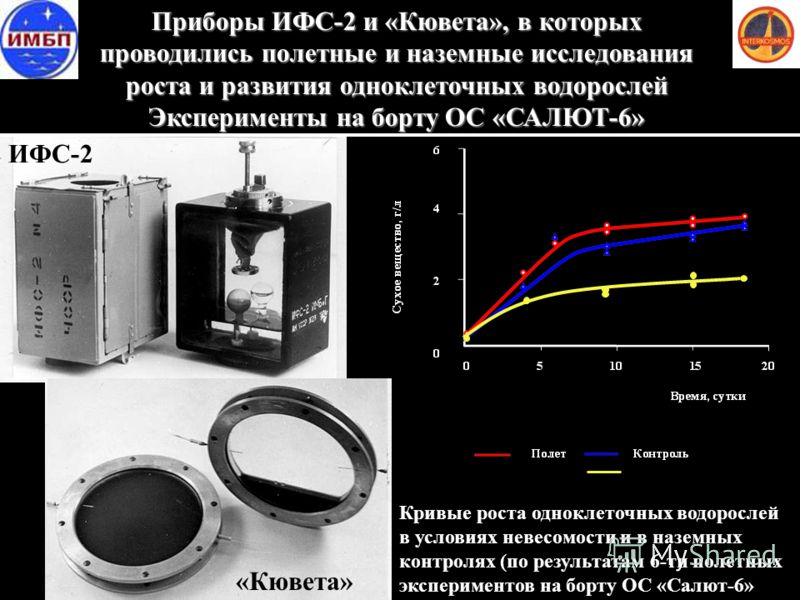
Source
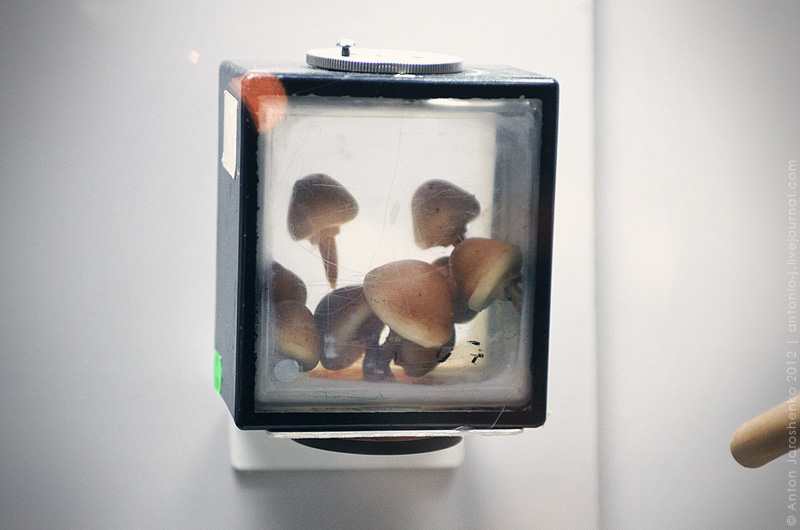
The device IPS-2 was intended for the cultivation of mushrooms, tissue cultures and microorganisms, aquatic animals. Source
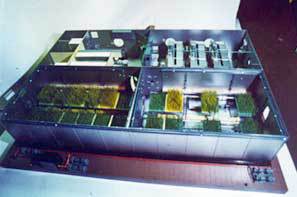 Since the 70s in the USSR conducted experiments on closed systems. In 1972, work began "BIOS-3" - this system is valid and now. The complex is equipped with cameras for growing plants in controlled artificial conditions - phytotrons. They grew wheat, soybeans, chufu salad, carrots, radishes, beets, potatoes, cucumbers, sorrel, cabbage, dill and onions. Scientists were able to achieve almost 100% closed cycle in water and air and up to 50-80% in nutrition. The main goals of the International Center for Closed Ecological Systems are to study the principles of functioning of such systems of varying degrees of complexity and to develop the scientific foundations for their creation.
Since the 70s in the USSR conducted experiments on closed systems. In 1972, work began "BIOS-3" - this system is valid and now. The complex is equipped with cameras for growing plants in controlled artificial conditions - phytotrons. They grew wheat, soybeans, chufu salad, carrots, radishes, beets, potatoes, cucumbers, sorrel, cabbage, dill and onions. Scientists were able to achieve almost 100% closed cycle in water and air and up to 50-80% in nutrition. The main goals of the International Center for Closed Ecological Systems are to study the principles of functioning of such systems of varying degrees of complexity and to develop the scientific foundations for their creation. 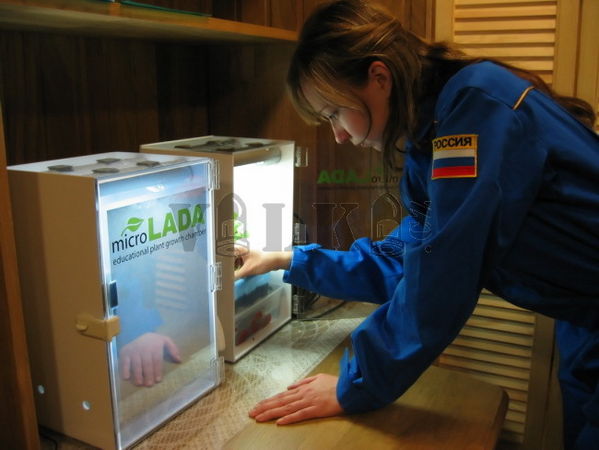 One of the high-profile experiments simulating a flight to Mars and returning to Earth was the Mars-500.. For 519 days, six volunteers were in a closed complex. The experiment was organized by Rokosmos and the Russian Academy of Sciences, and the European Space Agency became a partner. On the “board of the ship” there were two greenhouses - lettuce grew in one, and peas grew in the other. In this case, the goal was not to grow the plants in close proximity to space conditions, but to find out how important the plants are for the crew. Therefore, the greenhouse doors were sealed with an opaque film and a sensor was installed to fix each opening. In the photo on the left, Marina Tugusheva, a member of the Mars-500 crew, is working with greenhouses as part of an experiment.
One of the high-profile experiments simulating a flight to Mars and returning to Earth was the Mars-500.. For 519 days, six volunteers were in a closed complex. The experiment was organized by Rokosmos and the Russian Academy of Sciences, and the European Space Agency became a partner. On the “board of the ship” there were two greenhouses - lettuce grew in one, and peas grew in the other. In this case, the goal was not to grow the plants in close proximity to space conditions, but to find out how important the plants are for the crew. Therefore, the greenhouse doors were sealed with an opaque film and a sensor was installed to fix each opening. In the photo on the left, Marina Tugusheva, a member of the Mars-500 crew, is working with greenhouses as part of an experiment. Another experiment on the "board" Mars-500 "- GreenHouse. In the video below, member of the expedition Alexey Sitnev talks about the experiment and shows the greenhouse with various plants.
Man will have many chances to die on Mars . He risks to break when landing, freeze on the surface or just not fly. And, of course, die of hunger. Crop production is necessary for the formation of a colony, and scientists and astronauts are working in this direction, showing successful examples of growing some species not only in microgravity, but also in the simulated soil of Mars and the Moon. Space colonists will definitely have the opportunity to repeat the success of Mark Watney .
